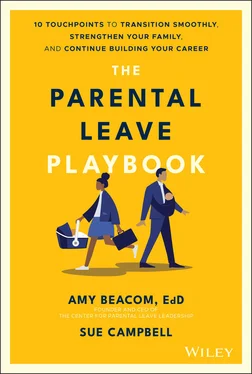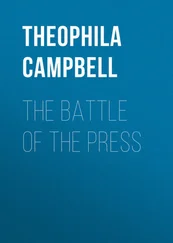14 14. Centers for Disease Control Prevention. (2019). Racial and ethnic disparities continue in pregnancy-related deaths. Department of Health and Human Services. https://www.cdc.gov/media/releases/2019/p0905-racial-ethnic-disparities-pregnancy-deaths.html
15 15. J. F. Paulson & S. D. Bazemore. (2010). Prenatal and postpartum depression in fathers and its association with maternal depression: A meta-analysis. JAMA, 303(19), 1961–1969.
16 16. D. B. Singley & L. M. Edwards. (2015). Men's perinatal mental health in the transition to fatherhood. Professional Psychology: Research and Practice, 46(5), 309–316.
17 17. C. C. Miller. (2019). Sweden finds a simple way to improve new mothers' health. It involves fathers. New York Times. https://www.nytimes.com/2019/06/04/upshot/sweden-finds-a-simple-way-to-improve-new-mothers-health-it-involves-fathers.html
18 18. R. J. Petts, D. L. Carlson, & C. Knoester. (2020). If I [take] leave, will you stay? Paternity leave and relationship stability. Journal of Social Policy, 49(4), 829–849.
19 19. R. Bleiweis. (2020). Quick facts about the gender wage gap. Center for American Progress. https://www.americanprogress.org/issues/women/reports/2020/03/24/482141/quick-facts-gender-wage-gap/
20 20. Catalyst. (2021). Women CEOs of the S&P 500. https://www.catalyst.org/research/women-ceos-of-the-sp-500/
1 Martin, N., & Montagne, R. (2017). Nothing protects black women from dying in pregnancy and childbirth. ProPublica. https://www.propublica.org/article/nothing-protects-black-women-from-dying-in-pregnancy-and-childbirth
2 Michelson, J. (2021). How small companies can offer great paid-leave programs. Harvard Business Review. https://hbr.org/2021/01/how-small-companies-can-offer-great-paid-leave-programs
3 Popper, N. (2020). Paternity leave has long-lasting benefits. So why don't more American men take it? New York Times. https://www.nytimes.com/2020/04/17/parenting/paternity-leave.html#:~:text=Men%20Who%20Take%20Paternity%20Leave%20Are%20Less%20Likely%20to%20Get%20Divorced&text=Their%20research%20demonstrates%20that%20paternity,Unlock%20more%20free%20articles
4 Rehel, E. M. (2014). When dad stays home too: Paternity leave, gender, and parenting. Gender and Society, 28(1), 110–132. https://www-jstor-org.proxy.lib.pdx.edu/stable/43669858?seq=1#metadata_info_tab_contents
5 Same Sex Parents. (2019). Gender neutral/non-binary parent titles. https://www.same-sexparents.com/post/gender-neutral-non-binary-parent-titles
Chapter Two The 10A Transition Touchpoints Framework
YOU MIGHT HAVE already asked yourself, “Why isn't there a manual for this becoming a working parent thing?” Everybody has this reality check at some point. For me it was when I left the hospital and looked down at my son all scrunched in his car seat and thought, “What the heck do I do now?” For Kisha, it was when she felt her baby's first kick and realized this was really happening . For Jay, it was when he saw his partner constantly breastfeeding and realized it was on him to care for their toddler while also working full time from home. Many people ask for a manual when they confront changing a first diaper or giving a first bath. Yet even with this nearly universal desire, there still isn't a universal manual. As mind-boggling as this may be, there is a good reason: every child and every parent is different .
What are we really asking for when we yearn for a manual? Do we really want someone to tell us what to do? Do we care, or even listen, if we don't think it applies to us? What makes that magic moment possible when something clicks and we can finally hear for the first time what we may have been told 10 times before?
I worked with Caitlin when she had her second child. After he was born, she reported, “Wow, it's so much easier this time around. I'm much more relaxed because I know what to expect and I know that some of the things that were so scary before pass quickly. I really wish I had known this with my first.” She hadn't believed her large family when everyone told her not to worry so much with her first—that she would find her way. They had even spent time giving her advice and showing her how to do certain things. She didn't listen to them because she didn't trust that they could understand the unique experience she was going through. Like most new parents, when Caitlin was offered an informal manual, she wasn't ready to receive it. With the birth of her second child, Caitlin was able to pay less attention to the critical internal voice that had accompanied her the first time around, telling her she was doing it wrong. She was more confident because she had learned that she could do this, and do it well. I could hear her contentment and see her whole body relaxing when she talked about it: “I'm not worrying that he hasn't eaten enough or that he's sleeping at the wrong time or about the hundred other things I used to think about. I'm just looking at him and thinking, how did I get so lucky?”
Caitlin was describing the comfort, confidence, and expertise we all get when we have lived through something difficult and discovered we not only made it through, but we got wiser along the way. Qualitative researchers talk about the value of learning from our unique and individual lived experience, through which we gain personal, even profound, firsthand knowledge about ourselves and the world around us, which enables us to grow and develop. We can be told or read about something, but it is in the doing that we learn.
In the consulting world, experiential learning (sometimes called action learning) is the gold standard when it comes to skill building and leadership development programs because it relies on lived experience to ensure what is being learned sticks and is carried forward. This is why I say (pun intended) the parental leave transition is the mother of all experiential learning programs and companies would be wise to see it that way .
As part of my research and theory-building for my doctorate over a decade ago, I wondered if we could capture the learning opportunities of this massive experience in a way that would support new parents to find their footing faster and bring what they were learning in warp speed at home into work, and, conversely, if there was a way for them to bring their expertise from work into what they were learning at home. Was there a way to allow for the uniqueness of the individual experience in a predictable and replicable process? I found there was.
The RETAIN Parental Leave Transition Coaching Model
When I had my first child, I realized there was a huge gap between new parent expectations of support and actual support within their companies—and in that gap lay an enormous missed opportunity.
I developed the RETAIN parental leave coaching pedagogy and method as a way to channel what I learned from my less-than-ideal experience of becoming a working parent into creating a new field of coaching to better support working parents, managers, and their companies. Today, RETAIN sits behind the manager training and new parent support work we do at my company, the Center for Parental Leave Leadership (CPLL), and gives our parental leave coaches a philosophy and method to use when working with expecting parents and their managers.
RETAIN is the first evidence-based, theoretical pedagogy for the growing field of parental leave coaching and is supported by over a decade of research and practical application as shown in the figure. I will say more about this foundation throughout the book where it is relevant. For now, all you need to know is that RETAIN is built on seven different academic evidence streams that play a role in how you experience your transition and how you can grow from it, including the research and theory of (1) executive coaching, (2) transition theory, (3) adult learning, (4) life stage theory, (5) career development, (6) role and identity theory, and (7) work-life conflict and enrichment.
Читать дальше












